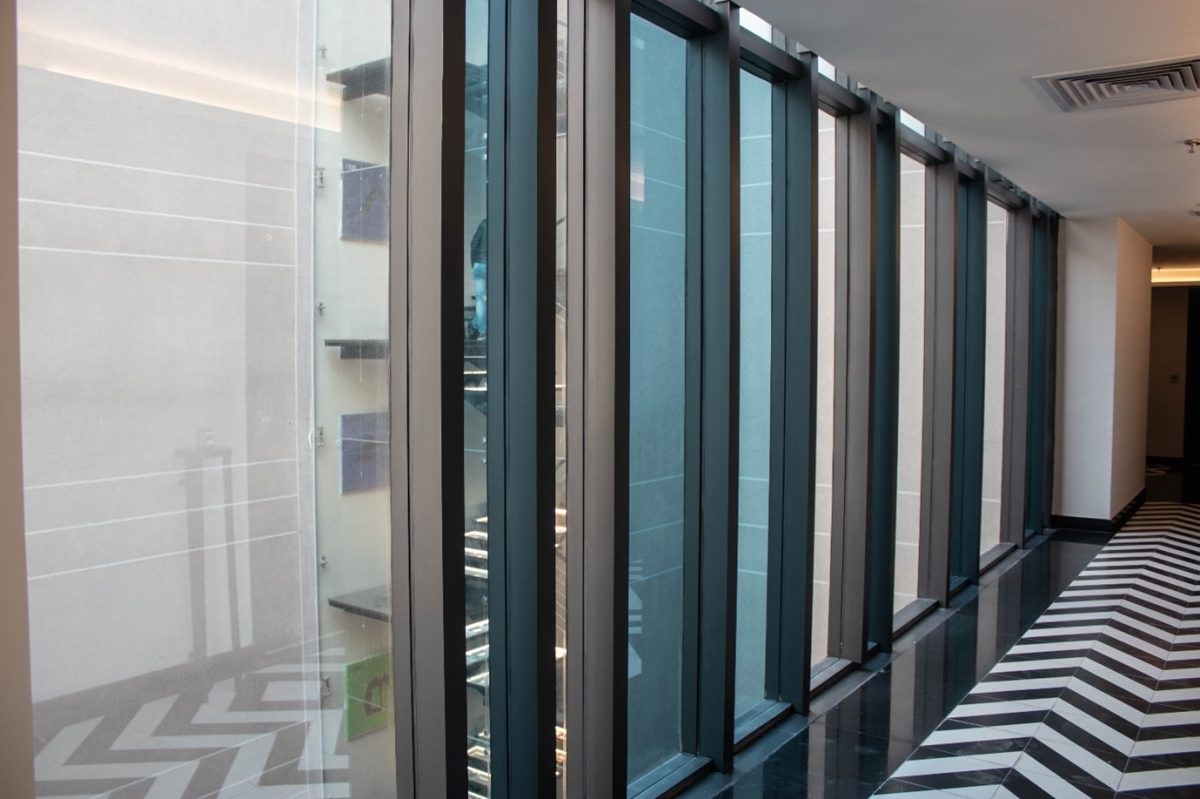Confusion over the differences between everyday glass and higher-grade architectural glass leaves many homeowners selecting unsuitable varieties for projects. This causes unnecessary budget overruns and safety issues from improper installations. Read on to clarify the common misunderstandings about basic annealed glass and learn how to optimally incorporate it into home design.
An Overview of Annealed Glass
The Annealed glass starts out as your run-of-the-mill, regular float glass before it goes through a special heating and cooling process. The glass gets baked slowly between 1150-1300°F like glass getting a deep tan in a tanning bed! Then it cools back down gradually in a temperature-controlled furnace rather than shocking it with quick cooling. This slow-bake then slow-cool approach helps strengthen the glass slightly compared to before.
Types of Annealed Glass
Annealed glass has a clear appearance in its basic form. But various other aesthetic looks can be achieved through additional manufacturing processes:
a. Clear Glass: Clear annealed glass maintains standard glass’s naturally transparent, colourless look. This variety works well for windows, shelves, tabletops, and display cases where visibility is important. Clear glass allows over 90% of visible light to pass through.
b. Tinted Glass: Adding specialised tints and coatings during production results in annealed glass taking on various colours and tones. Popular options are grey, bronze, green, blue, and brown tinted glass. Tints reduce light transmittance but still permit some visibility. Tinted annealed glass suits privacy applications.
c. Frosted Glass: Frosted glass gets its foggy, opaque look from taking a bath in hydrofluoric acid. The acid treatment leaves behind microscopic pores scattering light. Frosted annealed glass works beautifully for bathroom partitions, entrance doors, and room dividers, requiring privacy without completely blocking light.
Ways you can incorporate Annealed Glass
Thanks to its adaptability, annealed glass can spruce up many home living spaces. Here are some striking annealed glass uses that you may incorporate into your home design:
1. Glass Cabinets
Glass-fronted display cabinets and curio shelves make perfect backdrops for showing off cherished collectables and tableware. Annealed glass doors etched with patterns maintain privacy while permitting items to be highlighted. Install floating glass shelves holding vases and framed photos for a modern accent wall.
2. Dining or Coffee Tables
Annealed glass tops on wooden dining or coffee tables infuse rooms with luminosity. Clear table surfaces create the illusion of floating-place settings for an airy, spacious feel. For textural interest, choose frosted or coloured annealed glass tables instead. DIYers can even create their custom glass tabletops.
3. Ceiling Windows
Architectural elements like glass ceilings and skylights allow plentiful natural light into a room. Annealed glass makes a safe choice since it is less prone to shattering in case of impact than standard window glass. Large annealed glass ceiling panels produce breathtaking translucency for contemporary sunrooms or greenhouses.
4. Sliding Doors
Frosted annealed glass sliding doors give bedrooms and offices visual separation without totally closing them off. The glass doors also save space compared to traditional swing-style doors. For outdoor living areas, consider installing sliding annealed glass doors offering durable protection from the elements while maintaining views.
5. Frosted Shower Stalls
Thanks to water-resistant coatings, annealed glass stays watertight (but not waterproof), making it suitable for bathroom applications. Frosted shower panels, glass sinks, and wall shelves all help create a clean, airy spa aesthetic. Backlighting and decorative etched patterns on glass panels enhance the lavish appeal.
Benefits of Installing Annealed Glass
- Cost Savings– Basic annealed glass is very competitively priced compared to other glass products, making it budget-friendly for large installations. Custom cuts can also be created without needing advanced tools.
- Safety– While not as impact-resistant as tempered glass, annealed glass is less prone to dangerous shattering, resulting in large, jagged shards. When it does break, annealed glass splits into smaller, mostly blunt pieces, reducing injury risks.
- Easy Fabrication– Annealed glass remains the easiest to smooth, drill, paint edges on, sand, cut and transform into other shapes like arched windows. No post-production heat or chemical strengthening is needed.
- Aesthetic Appeal– With limitless transparency, etching, colouring and lighting effects possible, annealed glass offers high decorative versatility for creating stunning windows, room dividers, decor pieces and tableware. Even simple, clear sheets exhibit an inherent luminous brilliance.
- Structural Soundness– Annealed glass demonstrates good strength and durability to serve well as shelves, tabletops, ceiling windows and barrier panels. Coatings also improve wind, weather and impact resistance. With proper lamination, annealed glass supports significant weight.
Conclusion
With abundant design possibilities, annealed glass is an excellent choice for homes, restaurants, offices, stores and entertainment spaces. Whether used structurally for windows, doors or skylights – or decoratively for cabinet fronts, table tops or artwork – annealed glass combines aesthetic richness with flexibility. Consider utilising AIS Glass’s annealed glasses for your home and office. With some creativity, annealed glass can infuse any indoor or outdoor setting with added distinction.

